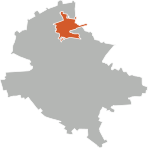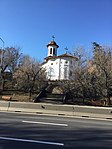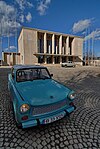Lake Băneasa
BăneasaLakes of BucharestRomania geography stubs

Lake Băneasa (Romanian: Lacul Băneasa) is a reservoir on the Colentina River at Băneasa in Sector 1 of Bucharest, Romania. The lake has a length of 3 kilometers (1.9 miles), a width between 50 meters (160 feet) and 400 meters (1,300 feet), a surface area of 40 hectares (0.40 km2), a depth between 1 meter (3.3 feet) and 3 meters (9.8 feet), a volume of 630,000 cubic meters (22,000,000 cubic feet) and a debit of 2.5 m/s.
Excerpt from the Wikipedia article Lake Băneasa (License: CC BY-SA 3.0, Authors, Images).Lake Băneasa
Strada Gârlei, Bucharest Băneasa (Sector 1)
Geographical coordinates (GPS) Address Nearby Places Show on map
Geographical coordinates (GPS)
| Latitude | Longitude |
|---|---|
| N 44.4923 ° | E 26.0719 ° |
Address
Institutul de Cercetări Alimentare
Strada Gârlei
013725 Bucharest, Băneasa (Sector 1)
Romania
Open on Google Maps









